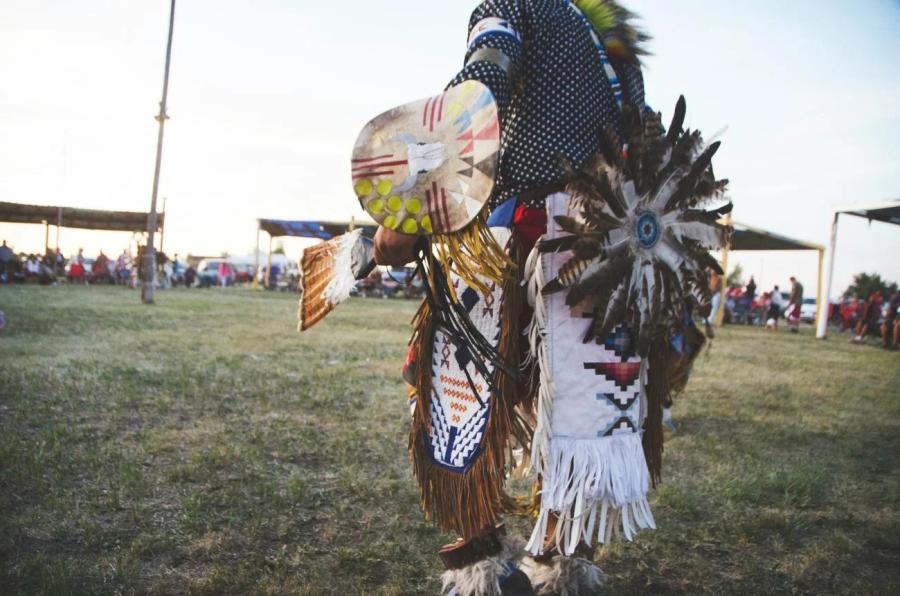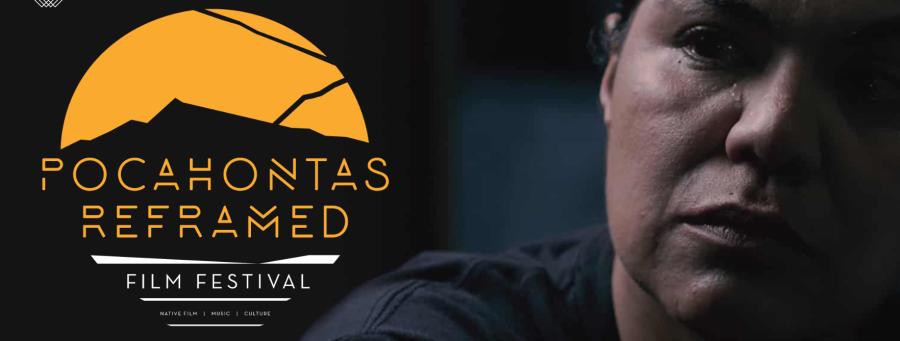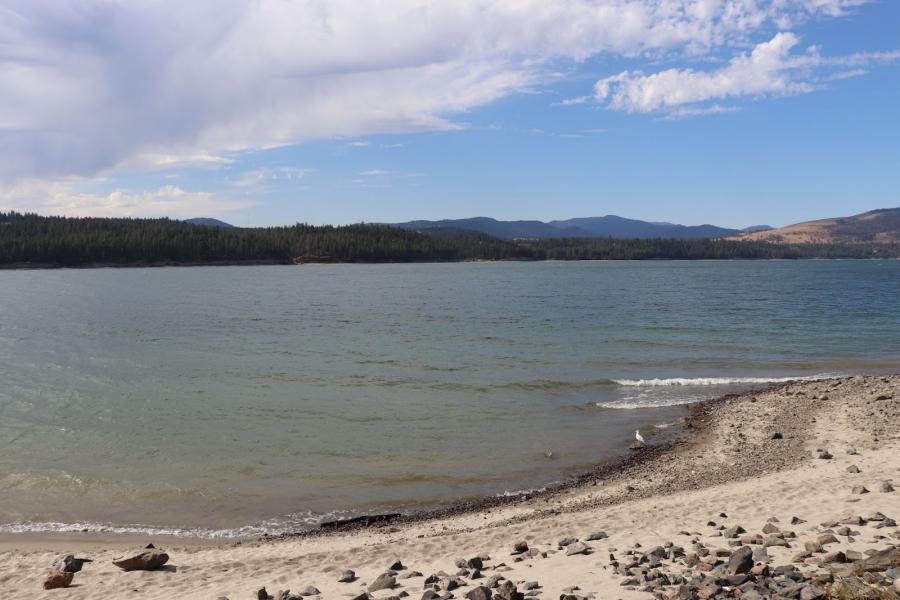In the spring of 1982 the walleye population of Lake Superior congregated in the Chequamegon Bay to begin its annual spawning run up the Kakogon and Bad Rivers on the south shore of the bay. While many observers doubtlessly expected some walleye to fall prey to Indian fishermen's nets, few expected them to be subjected to over-fishing of such an unprecedented scale. Nearly half the breeding population was destroyed as a dozen fishermen netted several thousand fish to sell from areas of the Kakogon sloughes reserved for the reservation fish hatchery which had failed to open. The men were fined in tribal court and publicly reprimanded by an Indian judge for heedless damage of an important resource. A flurry of reports, evaluations and recriminations sought to explain the causes for the failure of the hatchery and in part the aberrant behavior of the fishermen.
Spawning season is a traditional time for subsistence fishing among the Bad river Band of Chippewa. Gill nets are placed in the sloughes and Indians spearfish by torch light in the shallow rapids at night. Fish were a daily part of the diet prior to 1900 and are consumed regularly by over half the households today. Walleye and northern pike also represent a source of limited cash income. In the early 1900s members would exchange a portion of their catch for goods or as payment on accounts at the reservation store. Today a portion of the catch may be sold - under strict tribal regulation. The place of walleye in the local economy is clearly recognized, as is the need to protect them:
Walleye have been a nutritional staple...for generations beyond memory...high employment and a cash-poor economy [make] walleye a critical food source...effective regulation of member and non-member taking of walleye is essential to the preservation of the species in numbers sufficient to supply the economic and nutritional needs of its members. Tribal Code.
Walleye holds a special place in this Indian community. Even among those for whom "fishing is a dollar thing," trout are taken for cash, walleye for food.
The Chippewa Fish Hatchery
In 1974, the tribe established a reservation fish hatchery taking eggs from walleye netted during the annual spawning run. The development of the fish hatchery provided employment and income for the tribe while restocking reservation waters to assure the survival of the walleye and pike. The preservation of natural resources took on added importance during the early years of the Reagan administration as funding for various welfare and social assistance programs was reduced. Tribe members had two choices: to abandon the reservation in search of employment or to depend heavily on subsistence hunting and fishing. The hatchery represented to many an investment in the future of the tribe and, as expression of their will to survive, a source of collective pride.
Economic and Legal Dependence Limit Self-determination
Although tribal government was established under the Indian Reorganization Act of 1934, the reservation remained a community effectively under the control of the Bureau of Indian Affairs (BIA). Early tribal councils had little responsibility, and essential decisions were made outside the community. No action could be taken without agency approval.
In his 1970 Message to Congress, President Nixon signaled a major shift in government policy regarding reservations. Under Nixon tribes were assured independent legal representation in resource rights cases and tribal councils were empowered to plan and operate programs on their own behalf. The Indian Self-Determination Act of 1972 allowed the government to contract with Indian tribal governments to operate programs previously administered through Federal agencies. This Act was a significant move away from the reservation as an administered community toward a potentially more viable alternative, the "sustained enclave." Theoretically, such a community would possess the political means to interact with the wider society while maintaining the distinctive cultural traits of its members and thus provide an effective buffer against assimilationist pressure. The tribal council became the locus of power in the reservation community: seeking funding for projects, allocating monies, administering programs and jobs and regulating the use of resources.
The potential benefits of self-determination to Indian culture are evident. The BIA employee with few links to the tribe is replaced by individuals serving at the discretion of the tribal council. Local administration is cost effective and politically frees the administration from the position of dominating a minority population. Importantly, it also shifts the locus of responsibility and the onus of failure away from the bureaucracy and places it squarely at the local level. At the same time, however, it in no way changes the tribe's status as a client population. While the particular form of administration on the reservation has changed and programs more responsive to local needs introduced, essential power relationships remain the same.
It is important to note that the Act did not convey actual powers to the tribes, only the administration of programs. The ability to initiate and fund programs for community and resource development, however, fostered a perception of the tribal council as a political entity capable of legislative functions. The phrase "self-determination" took on new meanings as tribal councils operating under provisions of the Act probed the limits of their power and challenged state government over the control of natural resources. Native-initiated projects, such as the Bad River fish hatchery demonstrate how project success or failure is tied to two fundamental problems that confront native autonomy and resource control. First, the legal concepts of tribal power have not changed - particularly concerning on reservation regulation of people from outside the tribe. Second, the economic dependency of the tribes on the Federal government continues. The consequences of these weaknesses become evident through an examination of the events affecting the tribal fish hatchery.
Problems of Enforcement
While few members of the reservation questioned the importance of the hatchery as a source of employment and as a mechanism to enhance the walleye and northern population, netting for subsistence directly completed with hatchery operations. Nonetheless, starting in 1979, people who normally fished the sloughes voluntarily stayed out or used the less efficient live nets supplied by the hatchery allowing the females to be milked by the hatchery. Females not ready for milking when caught were place in holding pens at the hatchery and returned to the sloughes afterward.
After a short interval of coexistence, suspicions emerged that certain individuals were netting in the sloughes in violation of the voluntary compliance pact. Complaints were brought before the tribal council but apparently never acted upon. Rumors circulated that females in the holding pens were being sold by hatchery employees to restaurants on and off the reservation. The sale of fry to the Minnesota Department of Natural Resources angered others, and allegations of shady dealings were circulated. In 1980, an ordinance was passed to regulate fishing by members and non-members of the tribe within the exterior boundaries of the reservation. Under the ordinance no fish could be taken in the designed sloughes during the spawning run except those needed by the fish hatchery. Violation brought a $100 for the first offense and $250 for the second. The 1980 ordinance was given teeth by the hiring of tribal conservation wardens under a Right's protection program.
While voluntary cooperation sits well in the cultural scheme; enforced regulation does not. Previously, a muskrat cooperative that had nearly doubled the cash return on pelts for its members was disbanded when it attempted to establish and regulate trapping areas. "Indians do not like to be confined," remarked one former co-op member, "it's like being in jail. You have to stay there." The freedom to hunt and fish at will on the reservation is the most jealously guarded "right" of any Indian and the willingness of individuals to submit to the power of the council in this matter was conditioned by their growing confidence in the council's ability to affect change under the the Indian Self-Determination Act.
Regulation of Non-members
Regulation of tribal members on the reservation, although a sensitive issue, gained sufficient compliance for the success of the hatchery. Regulation of non-tribals was a more difficult problem. A 1978 report by the tribal planner had concluded that the supply of fish in the Kakagon and Bad River sloughes, two of the tribe's most valuable natural areas, was being depleted by non-Indian fisherman. Under the provisions of the 1980 ordinance, the tribal council claimed the ability to regulate the behavior of non-members (Whites and Indians of other bands), a power deemed essential to the preservation of the tribe's natural resources, yet the efforts of the Department of Natural Resources to regulate hunting and fishing by Indians off the reservation and tribal efforts to regulate non-Indian hunting and fishing on the reservation have long been a point of contention between the tribe and the State of Wisconsin. Tribal autonomy is non-territorial in nature (i.e. it includes rights to resources outside of areas currently controlled by tribes) and therefore not exclusive within reservation borders. In addition 56 percent of the land within the reservation borders has been alienated, purchased by non-Indians. Although most of this land is controlled by large lumber companies, some sections are privately owned and used as hunting and fishing camps. The decision to close the reservation to all non-Indian sportsmen was quickly challenged in court and in direct confrontations with tribal conservation wardens. The issue was resolved counter to Native interests when U.S. District Court Judge Doyle struck down a similar ordinance passed by the neighboring Lac Courte Oreilles Band, by holding that navigable waterways on the reservation remained within the domain of the State of Wisconsin and therefore could not be regulated by the tribe (the Baker Decision). This was only the first of several rulings which would begin a process of disillusionment among the members of the tribe.
Unable to protect the sloughes from fishing by non-Indians, tribal conservation efforts were further hampered by the Montana Decision handed down by the U.S. Supreme Court in 1981, by which the Supreme Court placed limitations on the extent of Indian jurisdiction over non-Indians on non-Indian lands within the reservation. The Department of the Interior immediately advised tribes to analyze their ordinances in light of that decision and to use caution and consult with their attorneys prior to exercising and consult with their attorneys prior to exercising any jurisdiction over non-Indians.
This decision had a profound impact on the attitudes of tribal members. According to a former tribal game warden, "this inability to enforce fishing regulations on non-members made it difficult to enforce ordinances on our own people." It was a sense of importance in the face of the unequal application of laws of their own making that led people who were usually respectful of their resources to abuse one of great importance to them and to the success of the hatchery.
Meanwhile the hatchery opening was delayed because the funding became tangled in a bureaucratic web. A proposal from the tribal council, such as the one seeking funds for the fish hatchery, must travel to the BIA agency office in Ashland, Wisconsin, then to Minneapolis and on to Washington for final approval. Approval then goes to New Mexico where a check is drawn, sent to Minneapolis and retraces its way back to the council. In 1982 the journey took a bit longer then usual and the monies to operate the hatchery didn't arrive until the last day of the spawning run - in time to see it officially closed without opening. People have little patience with explanations of funding delays and although the request for funding had been submitted on time, the onus of failure fell on the tribal council.
At the same time a second funding problem eliminated tribal conservation wardens. The Rights Protection Program which had led to the creation of a group of trained, professional conservation wardens had worked well during its first two years. Despite their limited powers of enforcement, wardens had effectively supervised the walleye run and the wild rice harvest and enforced tribal hunting ordinances. The program was to run for three years and, if successful funding was to be taken over by a department within the Bureau of Indian Affairs. However, since no department was willing to carry the program as a permanent budget component, it was unceremoniously dropped in its second year.
Demoralized and lacking leadership, the conservation staff didn't challenge requests by a dozen or so fishermen for six thousand transportation tags for fish to be sold off reservation. This oversight set the stage for the slaughter of walleye in the Kakagon sloughes. Frustrated with the council and with the political system, these men, moved by what one participant described as a "heavy anger," went down to the sloughes and just knocked hell out of the walleye...it never should have happened." Nor has it since.
The Voight Decision
This event and the circumstances surrounding it serve as reminders of the client status of reservations and point to basic issues that still need to be resolved. The Indian Self-Determination Act may have redefined the reservation as a cultural enclave but the ability of tribes to regulate their natural resources remains a critical issue. A major step toward a resolution occurred in 1983 when the Lac Courte Oreilles Band, (whose power to regulate the use of reservation resources was curtailed in the 1982 Baker Decision), won a major victory determining Indian off-reservation hunting rights in the Voight Decision. The wording of Voight Decision protected Bad River in its claim that usufructory rights to hunt, fish, trap and harvest wild rice on the lands ceded by the treaties of 1837 and 1842 are retained in the absence of language extinguishing such rights, and are implicitly reserved in the Treaty of 1854. This time Judge Doyle agreed. Under the ruling, tribal attorneys and the State of Wisconsin have begun to resolve the jurisdictional disputes over the control of on and off reservation resources.
The Voight Decision has begun to restore Chippewa belief in the tribal council's ability to affect change and has strengthened the role of tribal government and tribal courts. Tribal chairmen negotiate with the Department of Natural Resources to develop resource use plans; Indian conservation wardens monitor off-reservation hunting and quota compliance, and Indian judges in tribal court enforce their actions on Indian hunters and fishermen. Through these actions the promise of self-determination and the potential of the reservation as a cultural enclave are being realized. But this decision (with clarifications still pending) effects only the Chippewa of northern Wisconsin.
Until the policy issues raised by the Indian Self-Determination Act are resolved, events such as those that occurred at Bad River in 1982 and the frustration that led to them, will inevitably be repeated.
The Voigt Decision and Doyle Decisions
On March 8, 1974, members of the Lac Courte Oreilles (LCO) Band were arrested by Wisconsin Department of Natural Resources wardens. They were found guilty of possession of a spear for taking fish on inland waters outside the boundaries of the reservation.
On March 18, 1975, the LCO tribe filed suit in Western Federal Court requesting that the State of Wisconsin be ordered to recognize Lake Superior Chippewa rights to hunt, fish, trap and gather as reserved in the Treaties of 1837 and 1842. Four years later, Judge Doyle decided against LCO, concluding that the tribe had given up off-reservation rights when they accepted permanent reservations in the Treaty of 1854.
On January 25, 1983, the LCO appealed Doyle's decision to the U.S. Court of Appeals, which reversed the decision and returned the case to Doyle to "determine the scope of state regulation." This reversal (the Voigt Decision) judged that interpretation of Indian law must take into account the history surrounding the treaty, the negotiations and how Indians would have interpreted the treaty. Based on these factors, the court found that the Chippewa had not given up rights to land and resource use outside the reservation, and thus, those rights still exist.
On October 3, 1983, the United States Supreme Court refused the state of Wisconsin request for appeal of the Voigt Decision. Other treaty tribes affected by the decision include Red Cliff, Bad River, St. Croix, Lac du Flambeau and Mole Lake. The mandate of the Court of Appeals, while a clear victory for the tribes in that it reaffirmed the off-reservation rights of the Chippewa, was returned to Judge Doyle for judgement as to the extent and regulations of these rights.
On December 9, 1985, the trial began, to determine the types of Native resource use activities allowed, whatever boundaries might be applicable, allocation of resource base between tribal and nontribal and the extent of state regulation.
On February 18, 1987, Judge Doyle entered his opinion; his order, on February 23, 1987. The central principle guiding his decision stated that "treaty rights to a natural resource that once was thoroughly and exclusively exploited by the Indians secures so much as, but no more than, is necessary to provide the Indians with a livelihood - that is to say, a moderate living." His decision granted the tribes the right to procure natural resources by all the methods of harvesting employed in treaty times and those developed since; the fruits of these endeavors may be traded and sold to non-Indians, employing modern methods of distribution and sale; privately owned lands are exempted from such use, unless they are proven to be necessary to the sustenance of "a modest living" by the Chippewa; the state may impose conservation restrictions on resource use.
Specific definitions and applications of the above stated guidelines, including the definition of "livelihood - a moderate living," are currently being determined. Further information on litigation concerning Chippewa use of natural resources can be obtained through: Great Lakes Indian Fish & Wildlife Commission, P.O. Box 9, Odanah, WI 54861, tel: (715) 682-6619.
Article copyright Cultural Survival, Inc.



